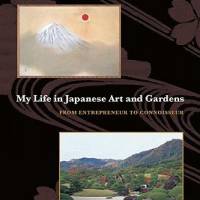By all accounts, Zenko Adachi (1899-1990) was quite a character. He described himself once as a "reckless, charging, wild boar kind of man" and this autobiography portrays him as a force of nature with a sensitive appreciation for the finer things in life, specifically gardens and art.
My Life in Japanese Art and Gardens, by Zenko Adachi.
256 pages
STONE BRIDGE PRESS, Nonfiction.
It reveals his impecunious beginnings selling coal from a cart in the hills of his native Shimane Prefecture and how he eventually made his fortune dabbling in real estate, the textile industry and rice trade.
His supreme achievement was the creation in 1970 of the Adachi Museum of Art in the city of Yasugi. It's a world-class art venue, with works by Japanese painters Taikan Yokoyama and Tomioka Tessai, and ceramicware from masters such as Kanjiro Kawai and Kitaoji Rosanjin. The museum interior is designed to afford structured views of an extraordinary lexicon of Japanese landscape forms designed by Kinsaku Nakane, with input from Adachi himself.
The garden is exquisite and a touch showy, and it demonstrates how the connoisseur in Adachi vied with the "wild boar." During the construction he expressed a wish to create a rectangular space in a wall of the museum through which part of the garden could be viewed as a horizontal scroll, but advisers counseled caution. Adachi withdrew, reappearing minutes later with a jackhammer, which he then used to smash a hole in the wall himself.


















With your current subscription plan you can comment on stories. However, before writing your first comment, please create a display name in the Profile section of your subscriber account page.